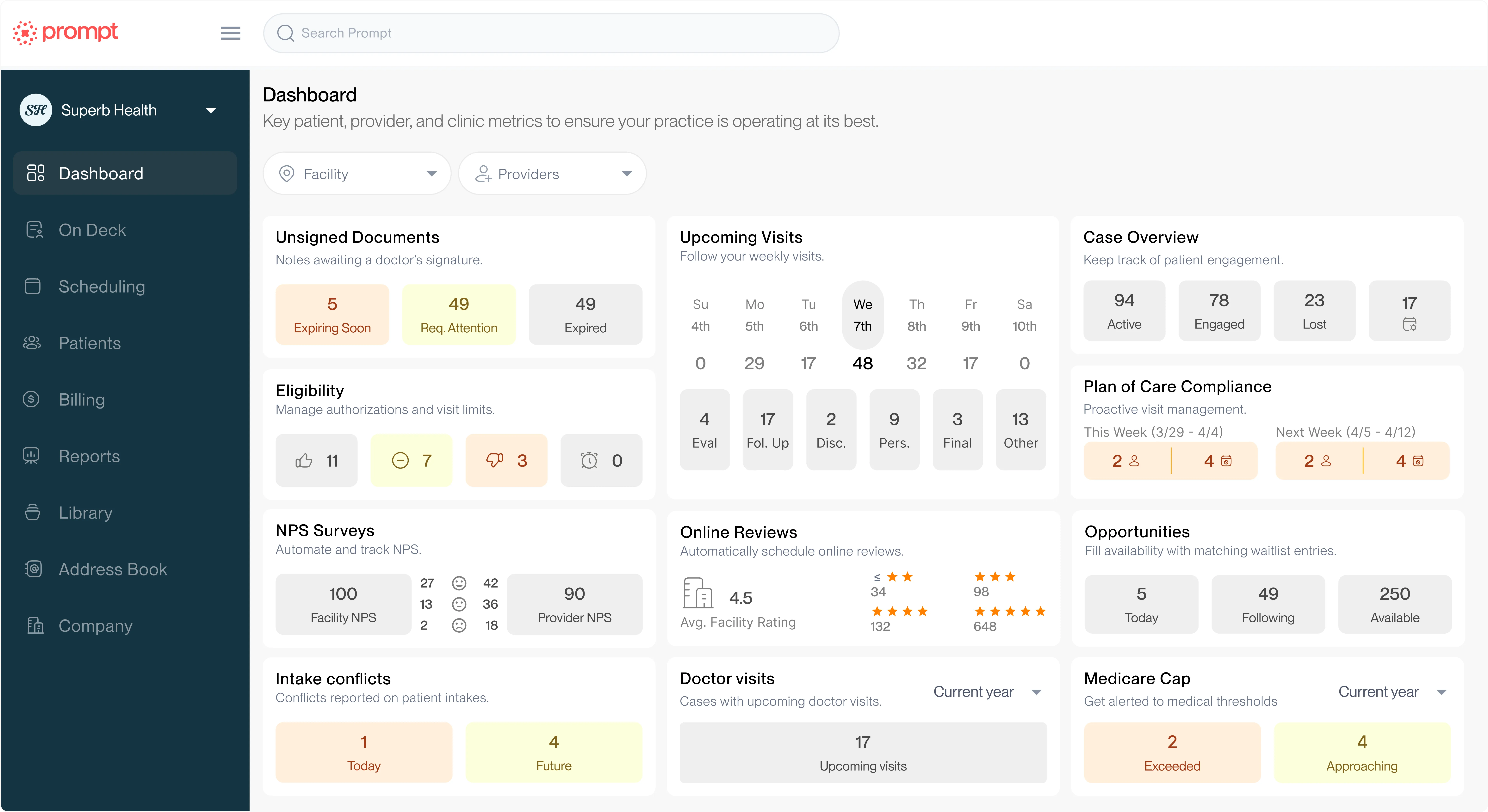See Prompt in action!


Documentation compliance is a critical aspect of healthcare, particularly for therapists, as it ensures the quality of patient care, reduces the risk of legal liabilities, and maintains the therapist's professional integrity.
Prompt (formerly PredictionHealth) analyzed 6.5 million notes and identified the top 5 areas of documentation compliance risk that therapists are commonly making today.
Therapists often fail to describe how the patient is presenting from a movement expert’s analysis and describe the rationale for skilled therapy services.
This can lead to a lack of clarity regarding the need for therapy and raise questions about the therapist's competency. Therefore, therapists need to document the rationale for skilled therapy services in the initial evaluation thoroughly.
A short, non-specific definition of the description of the condition is a common documentation compliance issue. Therapists need to provide a simple sentence describing the patient and why they are at therapy, as well as an onset mechanism, signs and symptoms, and a pain scale.
This information helps provide context to the therapy services provided and ensures that the documentation is complete and accurate.
Many therapists often have limited descriptions of the patient's subjective progression during the entire reporting period and only discuss progression from the last visit.
However, this approach does not provide a complete picture of the patient's progress. Therefore, therapists should ensure that they document the patient's response to treatment since the Initial Evaluation or last Progress Note.
Similarly, therapists often limit their clinical assessment of the patient's progress during the entire last reporting period during progress visits.
This could result in an incomplete assessment of the patient's progress and may raise questions about the quality of therapy services provided.
While improving documentation compliance is essential, therapists need to be cautious about over-documentation. Over-documentation can be just as problematic as under-documentation, as it can result in irrelevant and redundant information.
Therefore, therapists should focus on producing concise and relevant documentation that accurately reflects the patient's condition and progress.
Documentation can, at times, feel time-intensive and not enjoyable, and being worried about additional risk factors won't make it any better.
But it's important for therapists to pay attention to these identified areas of documentation compliance risk to ensure a high quality of patient care, protect themselves from potential legal troubles, and maintain the profession's integrity.
Creating thorough and concise documentation may seem like an awfully thin line to walk, but proper documentation is critical in providing high-quality therapy services.
Help your practice grow
From intake to insights, Prompt is the all-in-one platform you need